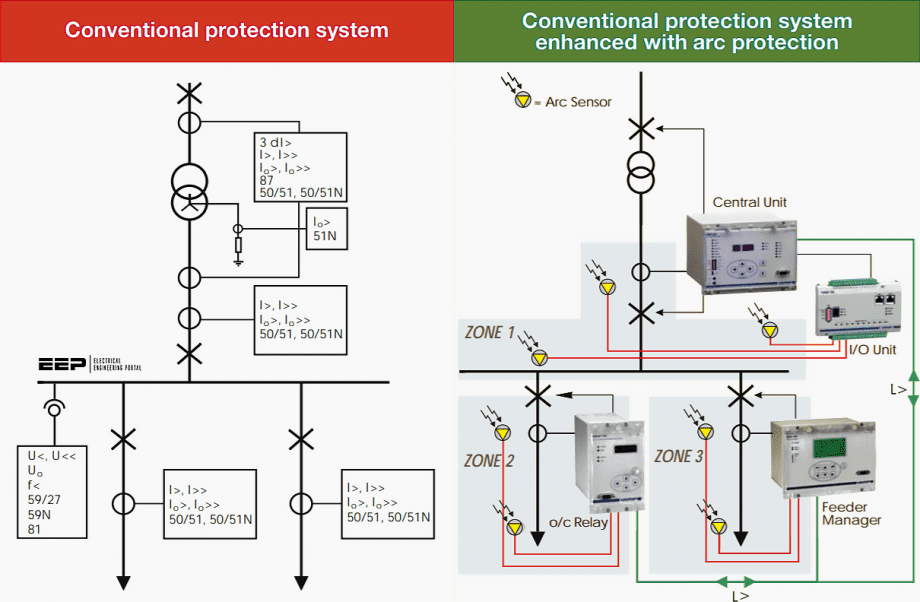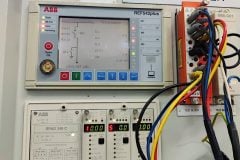What arc protection does?
Arc-flash detection relays are superior and provide much faster arc-flash detection times compared to the differential relays. With modern arc-flash detection technology, this detection time is of the order of ¼ cycles or even lower, based on 50/60 Hz. High-speed insulated gate bipolar transistors (IGBTs) are used to provide fully rated trip outputs rather than the relatively slow conventional dry contacts.

Thus, arc-flash detections form a technically acceptable and cost-effective way to reduce the arc-flash hazard.
When the traditional time-grading or blocking-based protection coordination principle is used, the traditional protection systems may not provide fast enough protection of substation faults. Further, high-impedance type of earth faults may cause prolonged operation times of earth-fault relays leading to the significant release of the arcing energy.
These facts pose a considerable risk to human beings and economical assets.
Comparison
In case you find relay operation times abstract, take a look at the real numbers for SLDs above , just to get the feeling:
Typically total fault clearing time for conventional protection system:
- Outgoing feeder 50 (relay) + 50 (CB) = 100 ms (+ Auto-reclosing)
- Incoming feeder 350 (relay)+ 50 (CB) = 400 ms
Typically total fault clearing time for conventional protection system enhanced with arc protection:
- Outgoing feeder 14 (relay) + 50 (CB) = 64 ms
- Incoming feeder 7 (relay) + 50 (CB) = 57 ms
Principle of Operation
Light detection systems have been commercially available for many years and have proven to be reliable and effective. The light emitted during an arc-flash event is significantly brighter than the normal lighting background. This radiant energy can be easily detected using light sensors.
Arc-flash relays have been around since the early 1990s. These earlier relays used only single-point light receptacles, which are called lens sensors. One or more lens sensors are located in a compartment, where a potential arc hazard can occur. Each sensor was connected radially to electronics, through clad fibers.
Because of opaque cladding, only the extreme ends of the radial fibers are light sensitive, which wasn’t fully acceptable.










